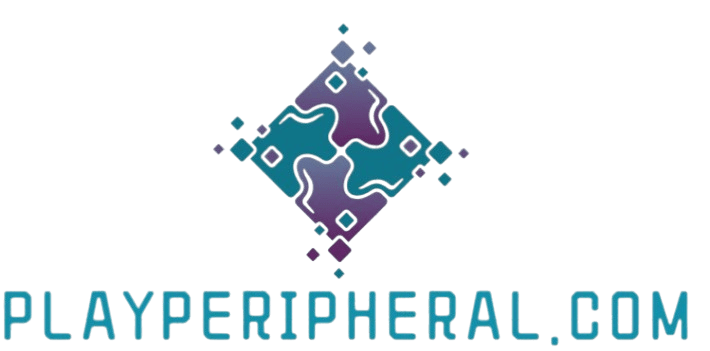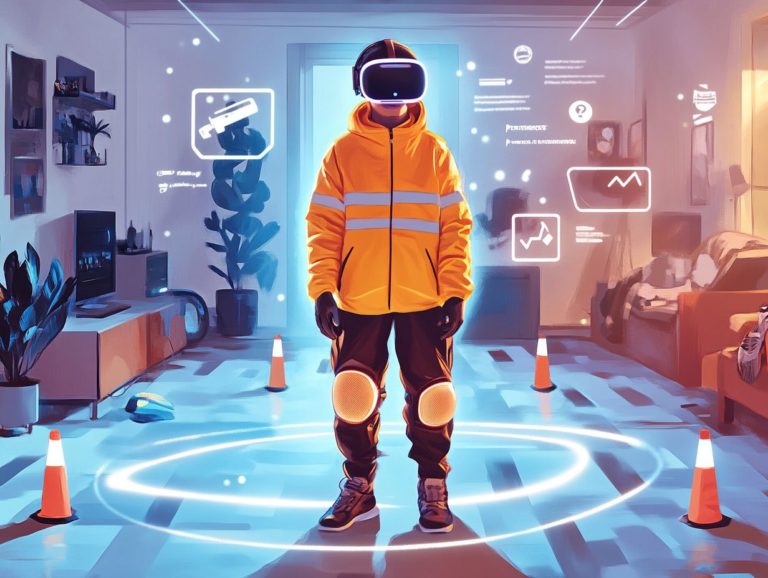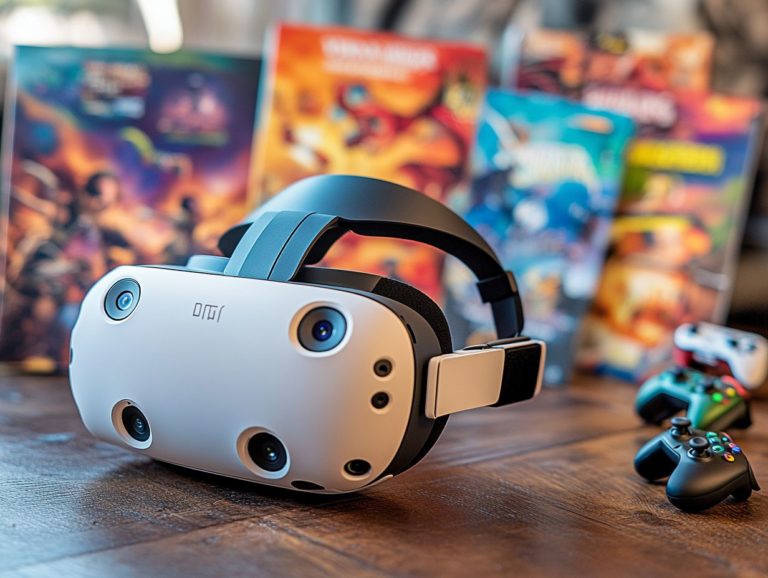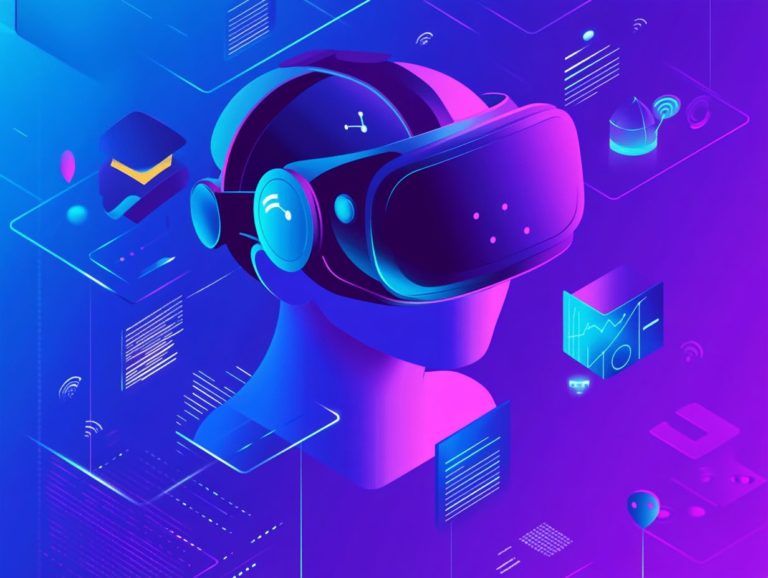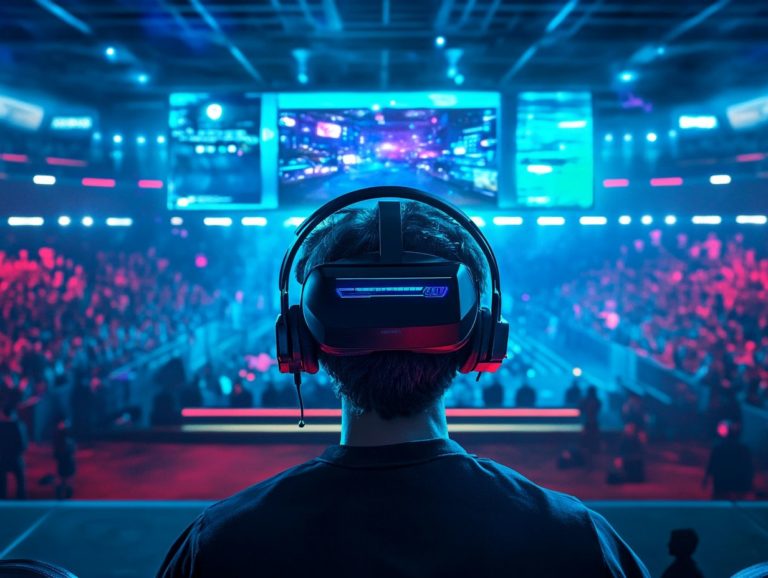navigating vr development: a beginner’s guide
Virtual Reality (VR) development represents an exhilarating frontier where technology intertwines seamlessly with creative storytelling. Get ready to discover the essential components of VR development, guiding you through the nuances of hardware and software requirements while exploring the diverse array of VR platforms available.
You will uncover how to craft immersive content and delve into design best practices. Master testing techniques and navigate the myriad options for publishing and monetizing your VR experiences. Embark on this journey and immerse yourself in the captivating world of VR!
Contents
Key Takeaways:
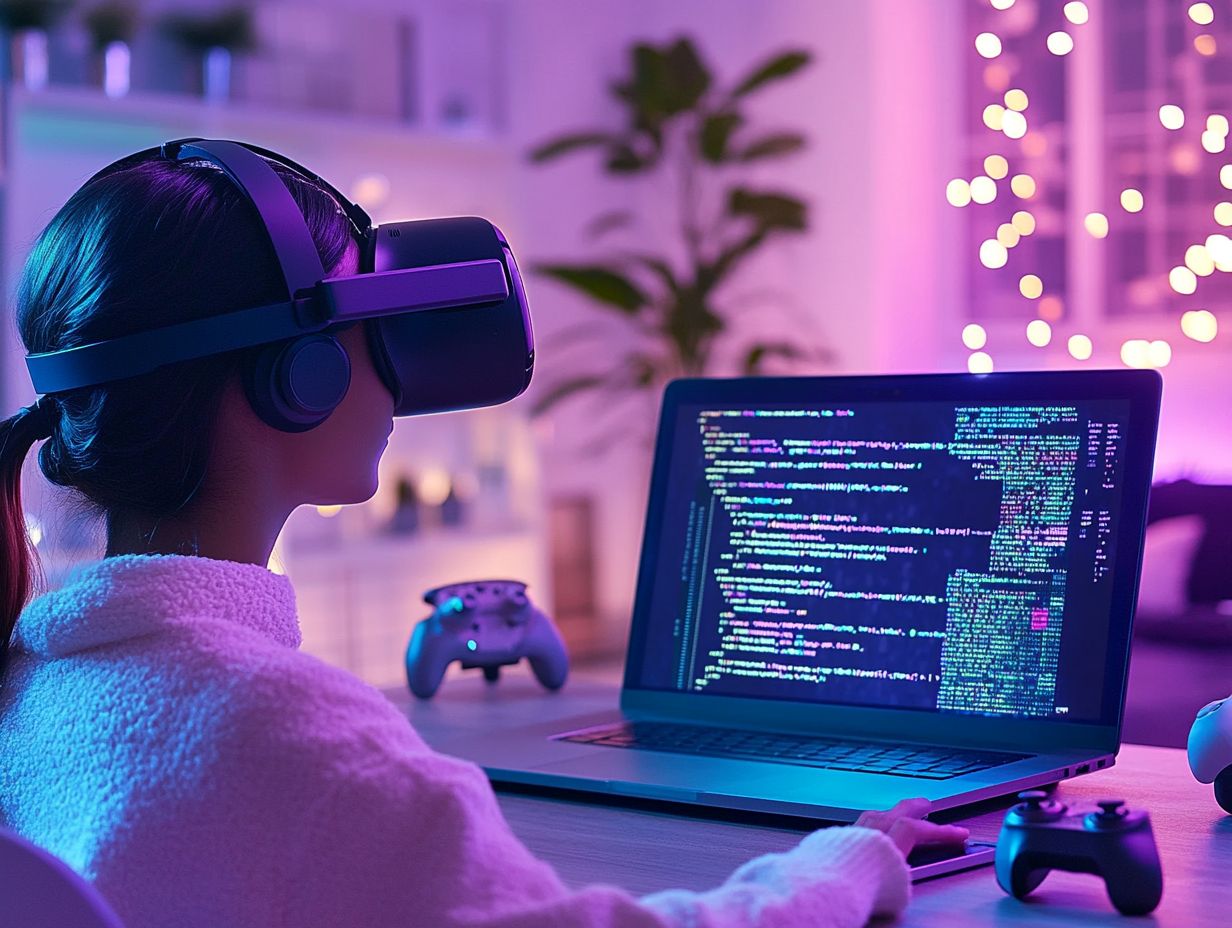
- Understand the hardware and software requirements for VR development before getting started.
- Familiarize yourself with different types of VR platforms and their unique features and limitations.
- Utilize specialized tools and techniques for creating VR content.
- Follow best practices for design to enhance user experience.
What is VR Development?
VR Development is about creating engaging virtual experiences. As a VR developer, you use programming skills like C++, C#, and JavaScript to create interactive environments that captivate users.
This dynamic field includes elements like 3D modeling and improving performance, with a focus on user-centered design. All these contribute to an engaging user experience.
The importance of VR Development spans multiple industries, including gaming, healthcare, education, and real estate. In gaming, it transforms how players interact, offering unprecedented levels of engagement and immersion.
In healthcare, VR is used for simulations and patient therapy, leading to safer and more effective treatment options. Educational institutions are leveraging VR to create interactive learning experiences, which boost retention and understanding among students.
In real estate, virtual tours and property visualizations allow prospective buyers to explore spaces from the comfort of their homes.
To excel in this field, proficiency in essential software like Unity and Unreal Engine is crucial. Pair that with a blend of technical skills and soft skills, and you re well-equipped to craft dynamic experiences effectively.
Getting Started with VR Development
Embarking on your journey into VR development requires a mix of theoretical knowledge and practical skills. You can acquire these through various online courses and certification programs designed for aspiring VR developers.
These programs typically cover topics like 3D modeling, programming, and interactive design. They also emphasize community support to foster collaboration and growth among learners like you.
Hardware and Software Requirements
To effectively start your VR development journey, it s vital to understand the hardware and software requirements for creating immersive virtual experiences. You ll need a powerful PC with a graphics card that can handle VR games.
Game engine software like Unity or Unreal Engine is essential for developing interactive VR content. Incorporating advanced motion tracking devices, such as the Oculus Rift or HTC Vive, can significantly enhance immersion by allowing real-time body movement integration.
Using software tools like Blender for 3D modeling will help you add intricate details to your VR worlds. Ensuring compatibility across platforms like PlayStation VR and Oculus Quest will also broaden your audience.
Improving performance is crucial in this endeavor. Fine-tune your graphics settings and adopt efficient coding practices to maintain frame rates and minimize latency. This attention to detail will help you craft a seamless user experience that captivates your audience.
Understanding VR Platforms
Grasping the intricacies of VR platforms is essential for developers intent on creating immersive experiences. Each platform offers distinct capabilities and technologies that enhance user interaction.
Whether it s motion tracking systems that enable fluid movement or haptic feedback devices that simulate the sensation of touch, your choice of platform significantly impacts the overall user experience and the design of your VR content.
Types of VR Platforms
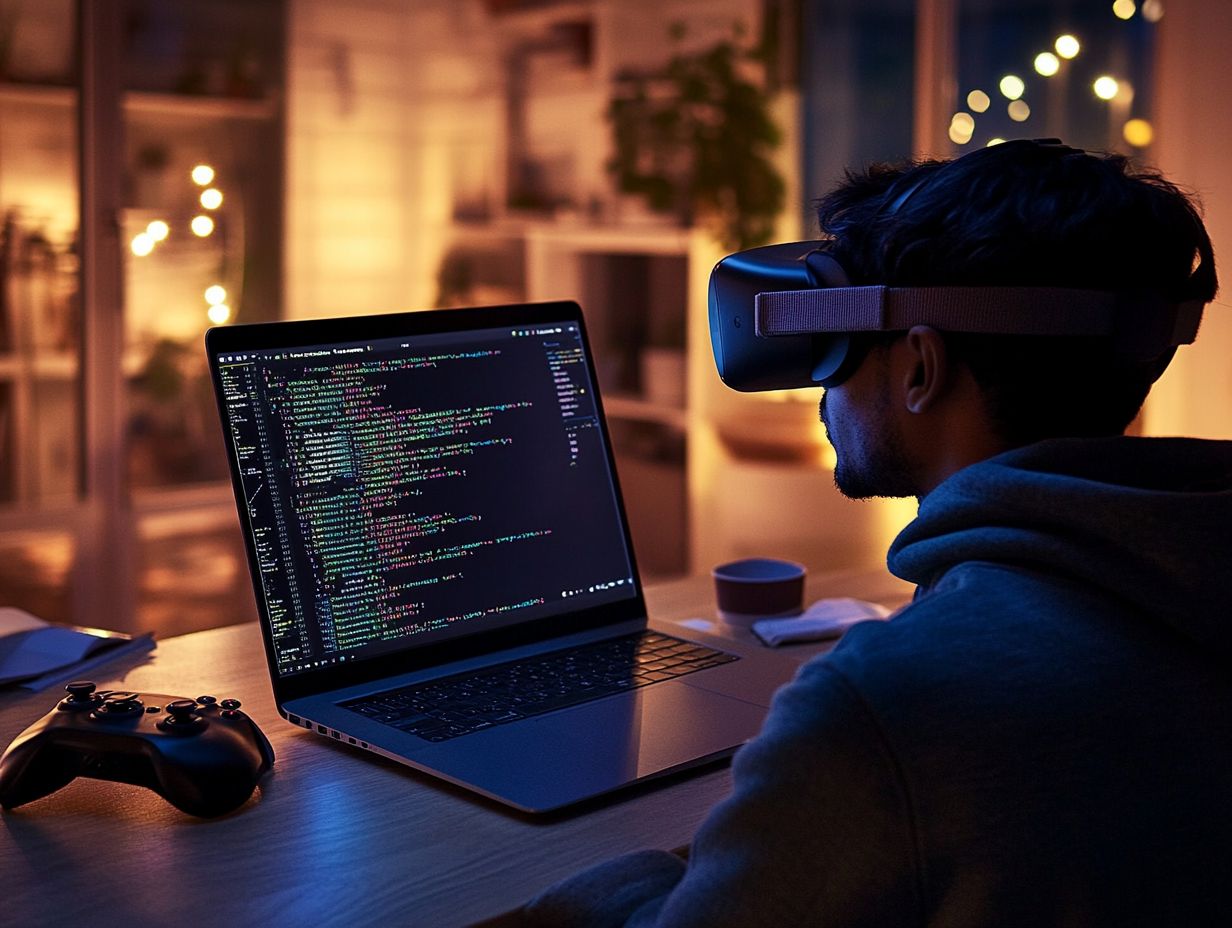
There are several types of VR platforms. Each one is designed for specific applications and experiences, so choosing the right platform is crucial for VR developers.
These platforms range from dedicated gaming VR systems to those that seamlessly blend Augmented Reality (AR), which adds digital elements to the real world, and Mixed Reality (MR), which combines real and virtual worlds. Each leverages various VR technologies to elevate interactivity and immersion.
In the gaming realm, platforms like Oculus Rift and PlayStation VR allow you to dive into your favorite titles in new ways. They bring environments to life with breathtaking realism.
In education, tools like Google Expeditions invite students to take virtual field trips, turning learning into an interactive visual experience.
In healthcare, VR platforms train medical professionals using simulated surgeries. This method fosters skill development in a controlled environment.
Real estate agents can harness VR to offer virtual property tours. This allows potential buyers to explore homes in detail without ever stepping foot outside.
Each platform serves a distinct purpose and transforms how you interact with the digital landscape, redefining possibilities in every sector.
Creating VR Content
Creating VR content is a blend of 3D modeling, interactive design, and programming. VR developers must use various game engine software tools to turn their visions into immersive experiences.
This process requires both creativity and technical skills. It s essential for the content to be visually captivating, interactive, and user-friendly.
Tools and Techniques for VR Development
Developing effective VR content demands a diverse arsenal of tools and techniques. These elevate both the creation process and the user experience.
Popular tools in VR development include Blender for 3D modeling, along with programming languages like C++, C#, and JavaScript. These tools empower you to integrate advanced programming techniques seamlessly.
Environments like Unity and Unreal Engine are robust platforms. They offer a wealth of assets and user-friendly interfaces, helping you turn your immersive visions into reality.
Using these tools helps you work faster and create smoother experiences an essential element for a seamless experience.
Community best practices and active engagement in forums can significantly enhance your development journey. This approach helps you refine your skills, troubleshoot challenges, and gather valuable feedback.
Designing for VR
Designing for VR requires a profound understanding of user experience and interactive design principles. As a developer, your task is to create environments that are intuitive and engaging.
By adopting a user-centered approach, you can ensure that your creations are accessible, immersive, and enjoyable. This significantly elevates the overall user experience.
Best Practices for VR Design
Implementing best practices in VR design is vital. You need to create content that is captivating, functional, and user-friendly.
Key considerations include effective use of motion tracking, intuitive navigation, and maintaining optimal performance all aimed at enhancing user experience in the interactive environment.
Prioritize crafting a user interface that feels natural and seamless. Utilize familiar visual cues and ensure your interactions are straightforward to minimize frustration.
Design navigation to flow smoothly. This allows users to traverse the virtual space without interruptions and includes feedback mechanisms that keep them informed about their actions.
Performance optimization is crucial. By minimizing latency and ensuring responsiveness, you can immerse users in the experience, leaving them feeling engaged and in control within the VR landscape.
Dive into the world of VR development today and unleash your creativity!
Testing and Debugging in VR
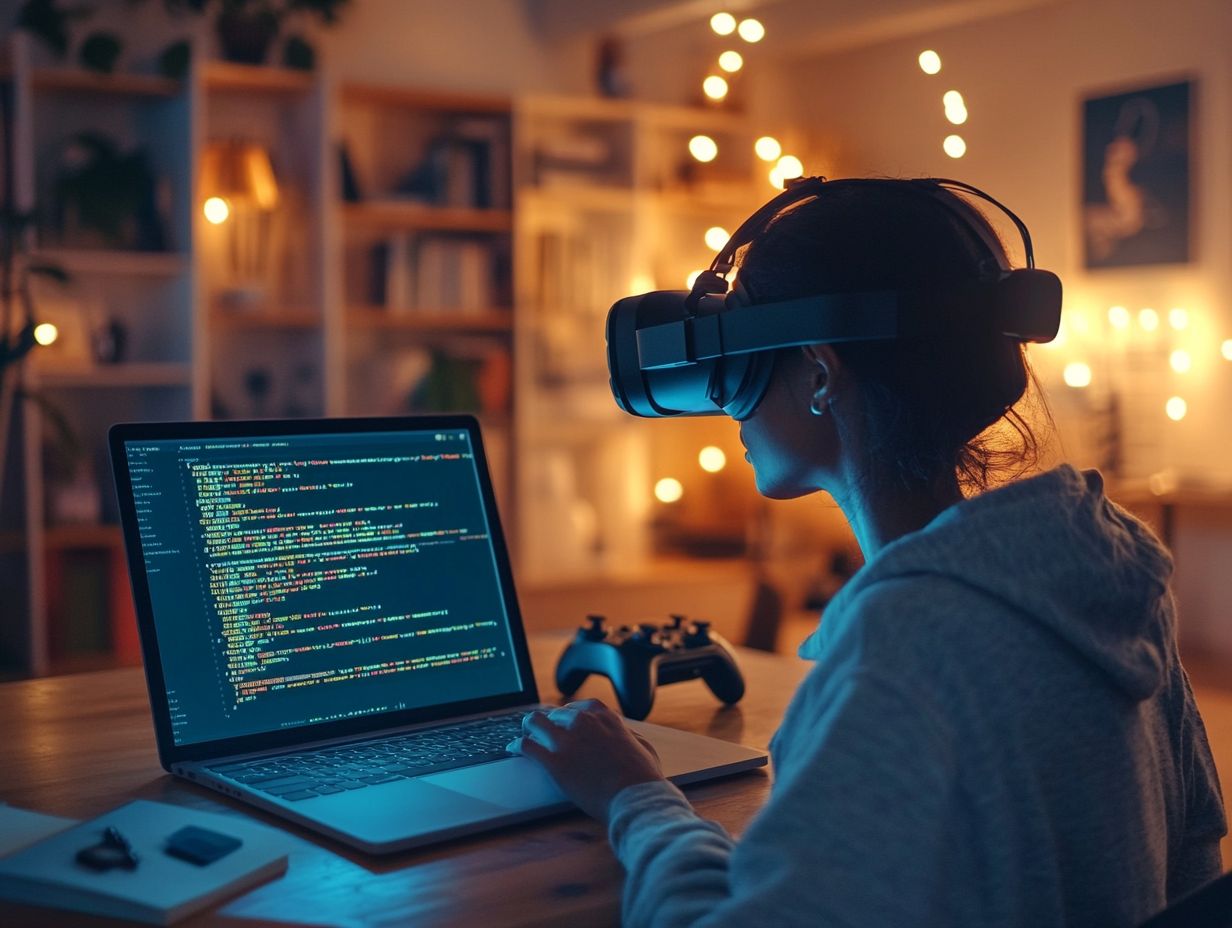
Testing and debugging in VR are essential stages in the development process. They allow you to identify and resolve common issues that could impede the user experience.
As a VR developer, it s imperative to implement rigorous testing methods. This ensures your content operates seamlessly across various platforms. You will tackle challenges like performance optimization and collision detection, making sure every aspect of the experience meets the highest standards.
Common Issues and Solutions
During VR development, you may encounter common issues like performance lag, improper motion tracking, and user interface glitches. Each of these can significantly disrupt the user experience.
By employing systematic debugging techniques and performance optimization strategies, you can effectively tackle these challenges. This will elevate the overall quality of your VR content.
For instance, performance lag often stems from high polygon counts, which refer to the number of tiny shapes that make up a 3D model, or inadequate resource management. Optimizing assets and utilizing a technique to manage how detailed an object looks based on its distance from the viewer can help mitigate this.
Improper motion tracking might be influenced by environmental factors or sensor limitations. You should explore real-time calibration tools or recalibration methods to ensure accurate user movements.
User interface glitches can detract from the immersive experience. Implementing a clear hierarchy in your UI design and conducting comprehensive user testing will help you identify and resolve these issues early on.
By prioritizing performance optimization, you enhance visual fidelity and guarantee that users enjoy a seamless and engaging VR experience.
Publishing and Distributing VR Content
Publishing and distributing VR content is a pivotal phase that directly influences the visibility and accessibility of your project. This enables you to connect with a broader audience.
Exciting distribution channels await you, giving your project the spotlight it deserves! You can explore various monetization strategies to generate revenue from your creations, enhancing the overall impact of your work.
Options for Distribution and Monetization
When it comes to distributing and monetizing your VR content, you have a wealth of options at your fingertips. Each option is tailored to different audiences and project types.
Popular platforms like the Oculus Store and Steam allow you to tap into a global audience. You might consider monetization strategies that range from direct sales to community support and subscription models.
Platforms such as PlayStation VR and mobile app stores offer unique experiences for console and mobile users, broadening your potential user base. Each distribution option presents its own advantages and challenges.
For instance, the Oculus Store provides a highly engaged audience but comes with stricter submission guidelines. On the monetization front, you might consider ad-supported content, generating ongoing revenue but potentially risking the user experience.
Alternatively, engaging in crowdfunding can help you build community interest. This fosters loyalty but requires considerable effort in marketing and community engagement.
Finding the right blend of distribution and monetization strategies is crucial. Don’t miss out on the chance to maximize your project’s reach!
Frequently Asked Questions
What is VR development?
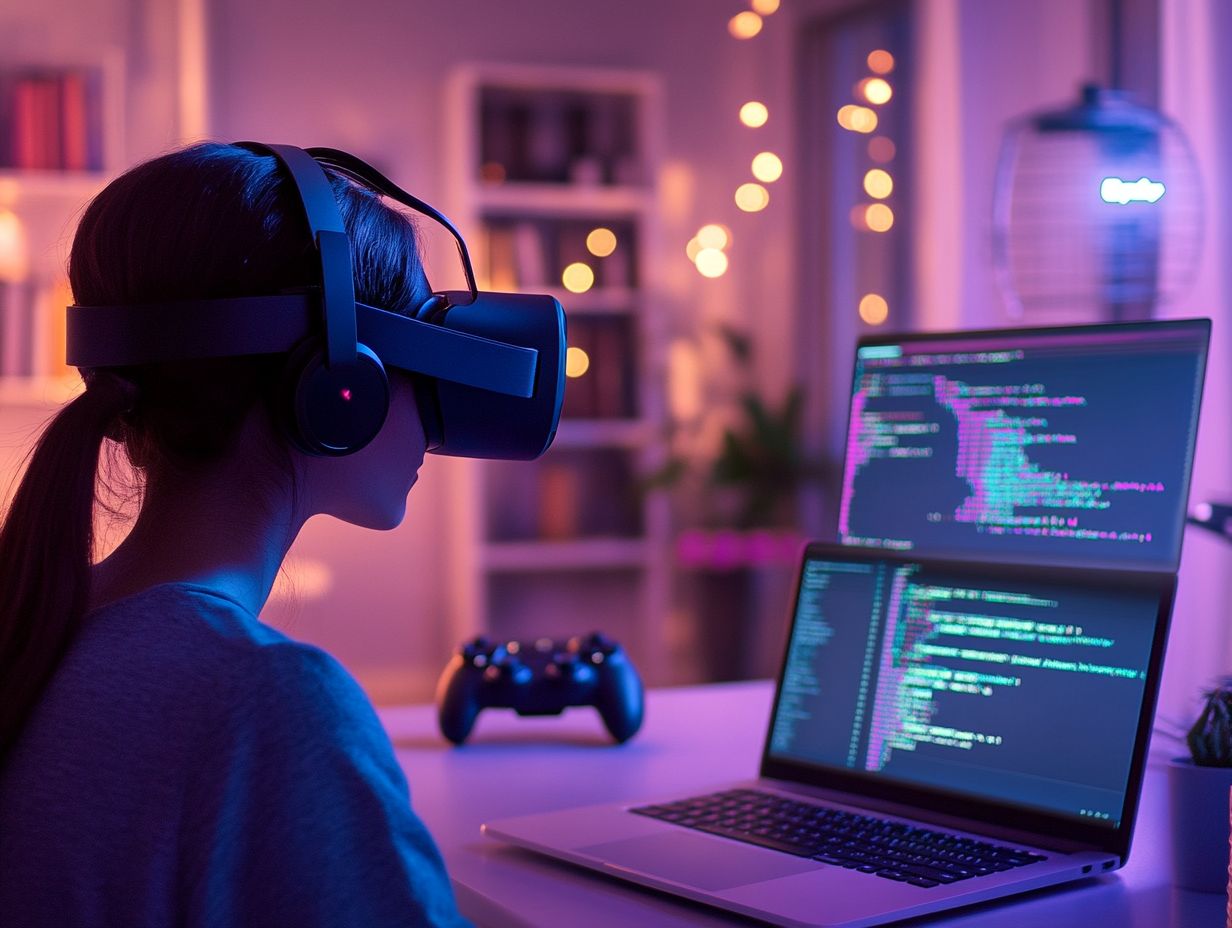
VR development is the process of creating virtual reality experiences and applications using specialized software and hardware.
What are the key components of VR development?
The key components of VR development include VR headsets, handheld controllers, VR software development kits, and 3D modeling software.
Do I need coding experience to develop VR applications?
While coding experience can be helpful, it is not necessary to develop VR applications. User-friendly VR development platforms are available that do not require extensive coding knowledge.
Have you faced performance issues in your VR projects? You’re not alone! Explore VR development tools today to enhance your skills and share your experiences with others.
What are the main challenges of VR development for beginners?
Beginners in VR development face several challenges, including understanding the technical side of VR and creating experiences that feel real. To get started, check out this guide on VR equipment for beginners.
Start with a simple project to build your skills. Utilize tutorials and online resources, and always test your application on different VR devices for compatibility.
Is VR development a growing industry?
Absolutely! VR development is booming with countless opportunities in gaming, entertainment, education, and healthcare. As technology advances, the demand for engaging VR experiences will soar.
